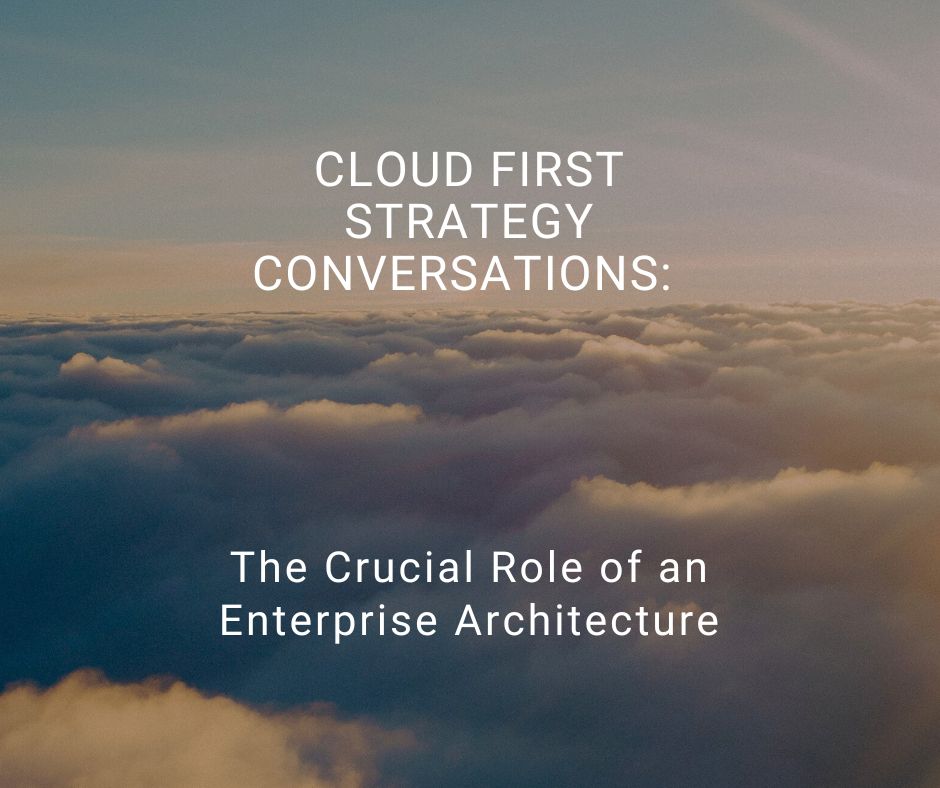February 7, 2024 | 3 minute read
Cloud First Strategy Conversations: The Crucial Role of an Enterprise Architecture

By Hank Wojteczko, Cloud Practice Manager, David Kent Consulting
In today’s technology infused world, choosing a cloud first strategy is a common and key directive from executive leadership in most organizations. Words like scalability, flexibility, elasticity, and cost efficiency often come to mind when leaders talk about how the public cloud improves their competitiveness. Often forgotten in such conversations is the need to execute an effective enterprise architecture as an integral part of any cloud first strategy.
Executing such a strategy often begins with a thorough enterprise architecture assessment that creates new value by enabling organizations to accurately define their future state. This future state couples business unit objectives to customer needs, thus ensuring that enterprise technology and human capital capabilities are appropriately sized and aligned to meet and exceed customer expectations. By identifying key business processes, data flows, customer and application requirements, the enterprise can tailor their cloud first strategy to support and strengthen specific business outcomes without compromising efficiency or resiliency. This in effect improves the organization’s competitive position within their respective marketplace.
A well-defined enterprise architecture assesses the enterprise with analysis, design, planning, and implementation using comprehensive and well defined practices. Enterprise architecture serves as a blueprint of organizational technology platforms, encompassing its people, culture, business processes, applications, data governance, cybersecurity, and technologies. Before embarking on a journey to the public cloud, it is imperative to assess and modernize an existing enterprise architecture for each application platform, or to create enterprise architectures where non-existent.
A primary objective for conducting a comprehensive enterprise architecture assessment is to gain a clear understanding of the organization’s current state. This involves identifying existing business processes, applications, infrastructure components, data dependencies, integrations between business units and service providers, and their respective levels of risk to the enterprise when disrupted. Without this fundamental knowledge, organizations may understate critical interdependencies or encounter compatibility issues during the migration and refactoring of workloads, possibly resulting in an expensive and time consuming reverse cloud migration of the affected platform(s).
Additionally, an enterprise architecture assessment helps to strengthen organizational cybersecurity by identifying potential security vulnerabilities and compliance shortfalls. This proactive approach allows organizations to implement appropriate security measures, compliance controls, and agile practices as an integral part of refactoring and moving critical platforms to the public cloud.
Moreover, a comprehensive enterprise architecture assessment lays the foundation for effective governance and cost management within the application platform(s). By establishing clear governance policies, standards, and cost optimization strategies, leaders can more effectively achieve greater accountability, transparency, and optimal resource utilization within their organizations.
In conclusion, the value of conducting a complete enterprise architecture assessment as part of a cloud first strategy cannot be overstated. Leaders and their respective organizations who successfully infuse enterprise architecture into their cloud first strategy create greater value than their competitors, thus unlocking the enterprise’s full potential for innovation and growth.




